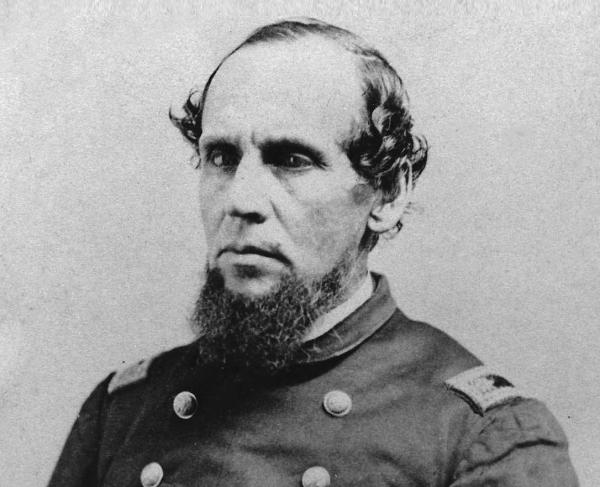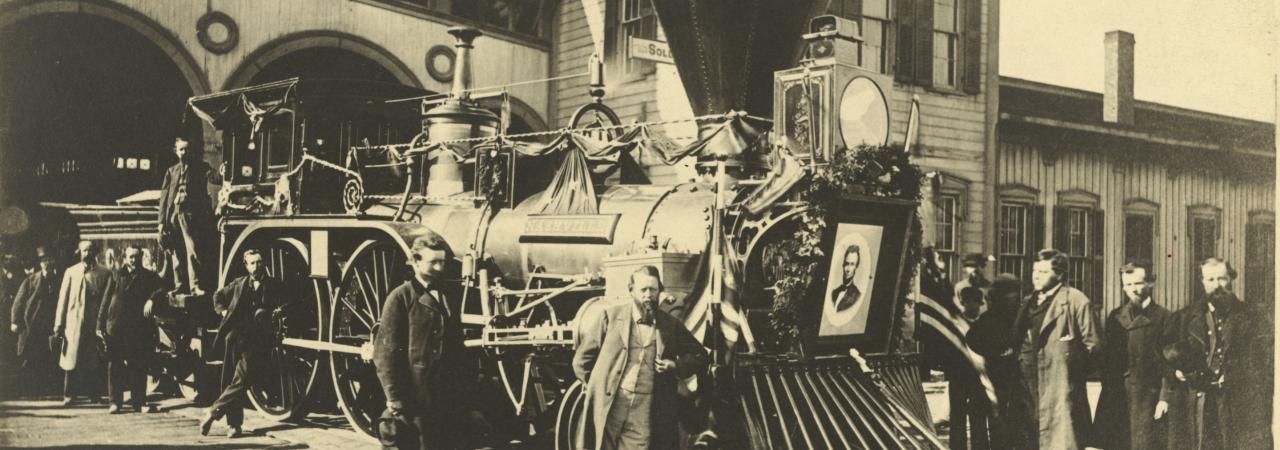
- Photo shows a Cleveland, Columbus & Cincinnati Railroad engine, with a portrait of Abraham Lincoln mounted on the front. The engine was one of several used to carry Lincoln's body from Washington, D.C., to Springfield, Ill.
Generations of students and scholars have made remarkable discoveries through primary source documents — the diaries, letters and other items that record the thoughts and first-hand experiences of the men and women of the Civil War era.
But, as the old adage goes, a picture is worth a thousand words, making the examination of period photographs a perpetual font of remarkable details of a single moment in time. And thanks to the ready availability of these digitized images through the Library of Congress and other sources, new discoveries are being made with increasing regularity.
Lincoln’s Funeral Train
Following his assassination, Abraham Lincoln had a long and circuitous journey before he was finally laid to rest in Springfield, Ill. The martyred president laid in state at two Washington, D.C., locations — the East Room of the White House on April 18 and the Capitol rotunda on the 20th. Then, following a private prayer service for members of his Cabinet, an honor guard took Lincoln’s coffin to be loaded onto a special funeral train.
More than 10,000 people watched the engine and its nine cars — including the presidential car that was hastily remade into a hearse — begin its 1,654-mile journey. The casket was accompanied by a group of Lincoln relatives and personal friends, as well as a military honor guard made up of luminaries from each branch of the armed forces. The train also contained the body of Lincoln’s 11-year-old son, Willie, an 1862 victim of typhoid fever, whose body was disinterred in order join his father in Springfield.
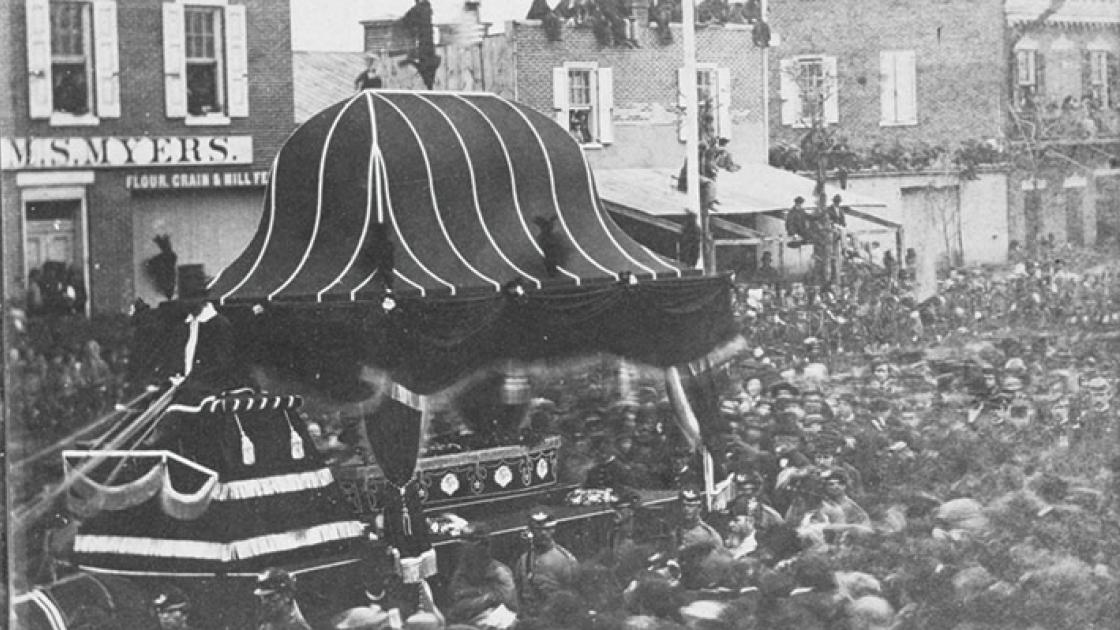
The train wound through hundreds of communities in seven states and made significant stops in 12 cities, including Baltimore, Md.; Harrisburg and Philadelphia, Pa.; New York City, Albany and Buffalo, N.Y.; Cleveland and Columbus, Ohio; and Indianapolis and Michigan City, Ind. — each of which included an additional lying in state. Lincoln’s final journey reversed the route he had traveled to Washington as president-elect in 1861.
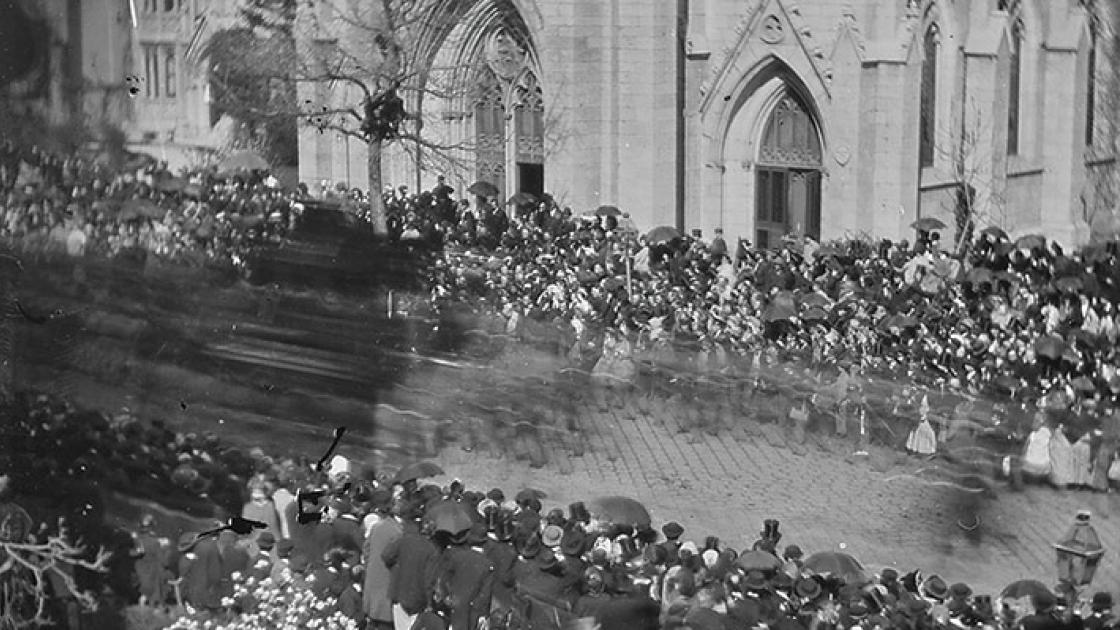
Millions of Americans turned out in person to pay their respects to Lincoln. In New York City, 160,000 people marched in a parade down Broadway, escorting the funeral cortege. A young Theodore Roosevelt was among the spectators; in fact, many scholars believe he is visible in a picture taken that day, watching from an upper-story window.
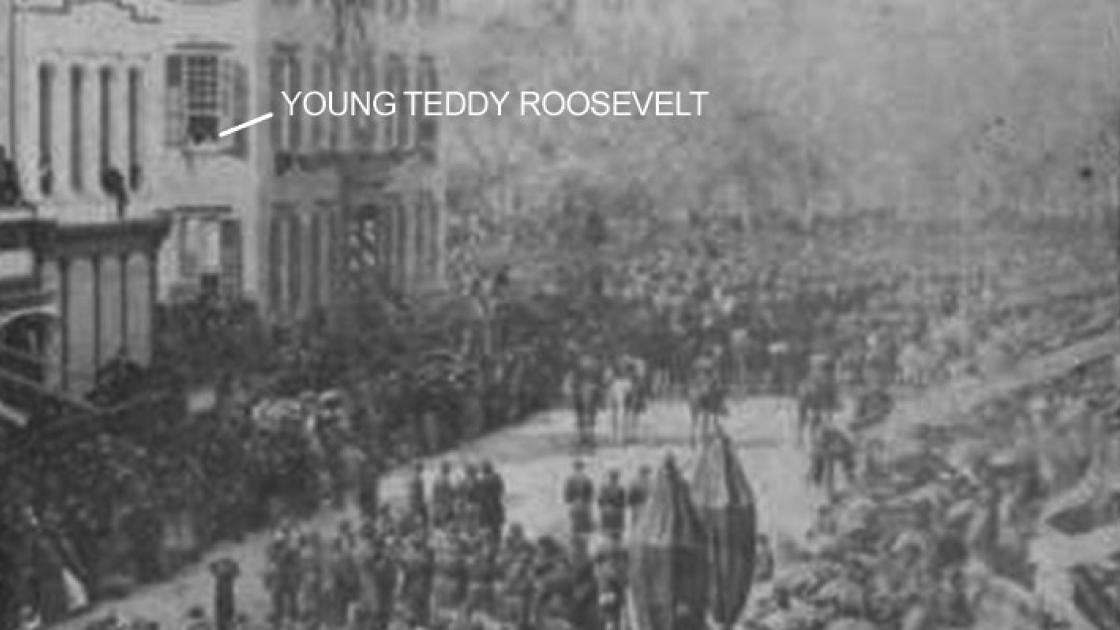
Grand Review
One of the greatest spectacles of the Civil War era occurred far from any battlefield. Although the final casualty-inducing battle was yet to come, President Andrew Johnson declared hostilities virtually at an end on May 10, when Confederate chief executive Jefferson Davis was captured in northern Georgia. On the same day, President Johnson called for a formal review to honor the troops.
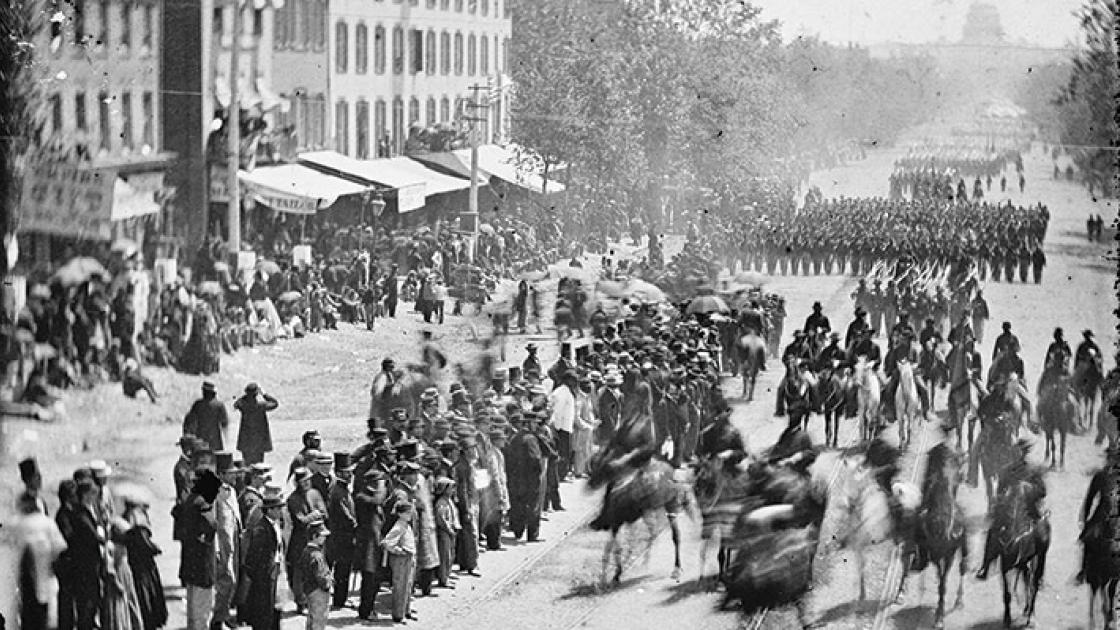
On May 23–24, 1865, the Grand Review of the Armies saw more than 145,000 Union soldiers parade along Pennsylvania Avenue in Washington, D.C. The event, huge in scale and pageantry, generated a near-carnival atmosphere that did much to diminish the pall that had settled on the city following the assassination of Abraham Lincoln. Bands played patriotic songs, and thousands of citizens lined the capital’s broad boulevards to watch the triumphant Federal soldiers from the armies of the Potomac, the Tennessee and Georgia parade by in their blue uniforms, buttons polished and shining.
From written accounts, we know that President Johnson, his Cabinet and senior military officials, including Lt. Gen. Ulysses Grant, observed the scene from the reviewing stand in front of the White House.
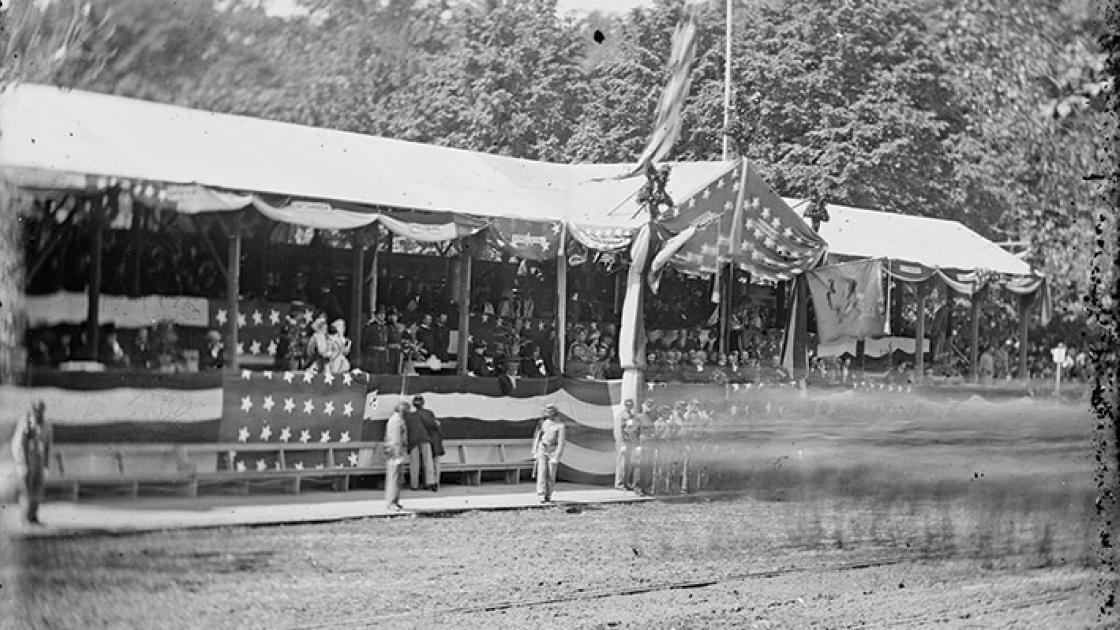
But by zooming in on an image taken during the event, many more fascinating details emerge: Maj. Gen. William Sherman engaged in intense conversation; Maj. Gen. George Meade wearing his spectacles to take in the scene; and Grant staring directly at the camera, seemingly the only person aware of the photographer. Other readily identifiable personalities include Maj. Gen. Winfield S. Hancock, Brig. Gen. Ely Parker (Grant’s Native American adjutant and military secretary), Secretary of War Edwin Stanton, President Johnson and Secretary of the Navy Gideon Welles.
The event was led by Maj. Gen. George Meade’s Army of the Potomac, infantrymen marching 12 abreast, with a cavalry contingent stretching seven miles. This was followed on the second day by Maj. Gen. William Sherman’s western army, behind which trailed the massive collection of livestock, baggage trains and civilian refugees who had begun following this force as it made its way through the Carolinas.
The parade was, both literally and metaphorically, the final march of the Union armies. Nearly all regiments were disbanded within two weeks, and the citizen soldiers began making their long journeys home.


